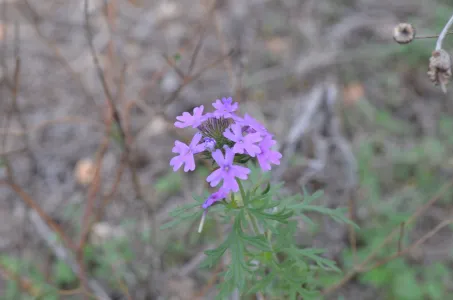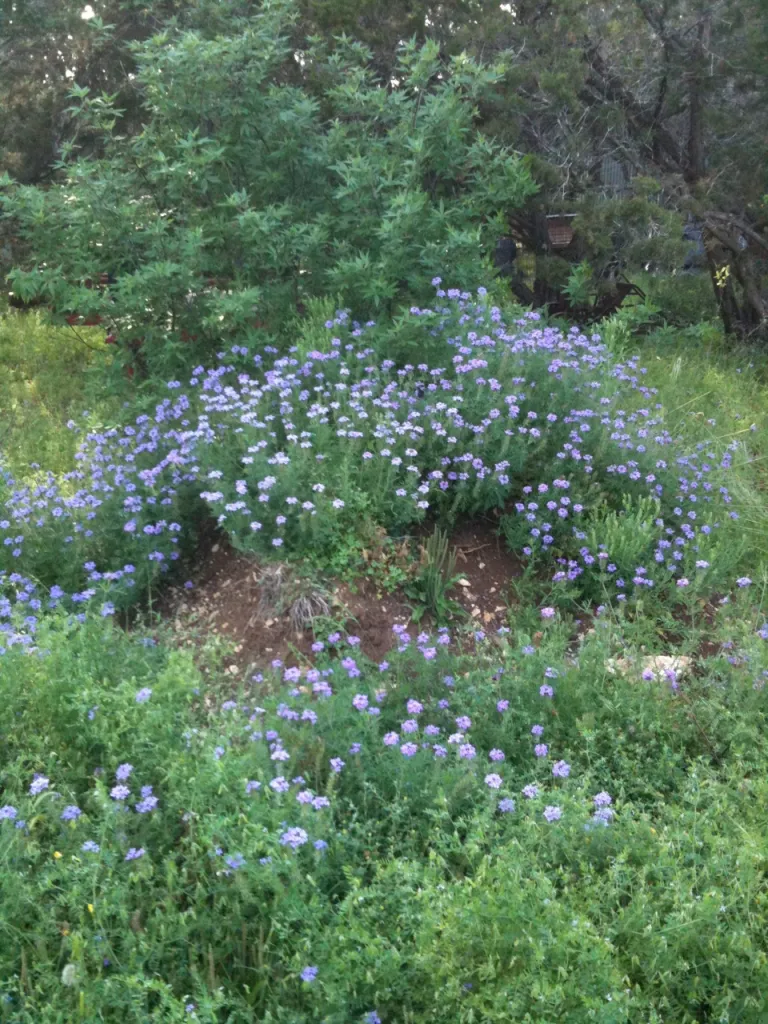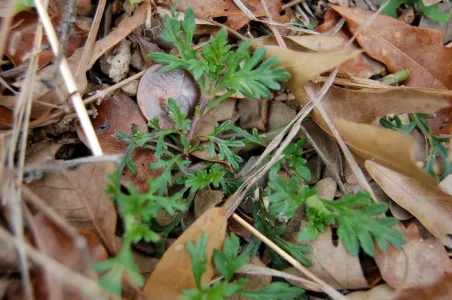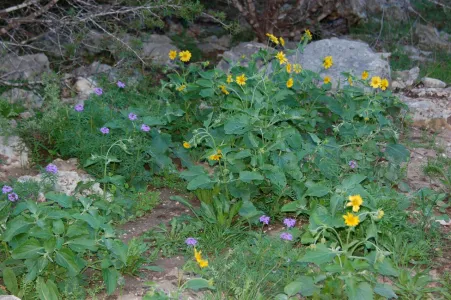By Delmar Cain
I don’t mind the cool weather. But I have heard some complaints from those who want to be about their spring outings. Although some birds and most butterflies are sensibly not so active with the lower temperatures, I can delay my enjoyment of them for a few additional days of cooler weather and a few less days of summer. Some of our early spring bloomers may extend their season a few days.

The cooler weather will not have an effect on the species selected by the Boerne Chapter of NPSOT as the May Plant of the Month for NICE (Natives Instead of Common Exotics). Prairie verbena or Dakota mock vervain (Glandularia bipinnatifida var. bipinnatifida) usually blooms from March to December every year, a welcome attribute for any viewing area.
It looks attractive in a rock garden or as a ground cover, but it also grows along the right of ways, in prairies and in pastures. Thriving in a variety of soils, prairie verbena is native in the southern states from Georgia to California and as far north as Wisconsin and South Dakota in the central part of the country.

Prairie verbena is listed as an annual or short-lived perennial herb. It has low water requirements and will grow in full sun or part shade. It rarely exceeds 12 inches in height, since the stems, which branch at the base and usually recline, rise near the tip with the flower head. But it may cover up to 24 inches from side to side.
The flower head is round with tubular purple flowers rising from the head. As the seasons pass the head grows longer with new flowers replacing the old. The fact that deer leave it alone (at least at my house), its extended blooming time and its attractiveness to butterflies should give it some protection from the mower if you have it growing at your house. If you don’t have it, you might consider obtaining it.

It is available at nurseries. Another option is to gather seeds from plants in open areas or along the road. If you have a few plants growing, move some of the young plants in the early spring. Prairie verbena will spread on its on, but it is easily controlled.
Planting and care instructions can be found at the tab, “NICE Plant of the Month” on the Boerne NPSOT website: http://www.npsot.org/wp/boerne/
If you are interested in the butterflies attracted by prairie verbena and many of the past “Plant of the Month” designees, you might also want to consider focusing that interest on one of the more fascinating species—the monarch butterfly. Monarch Watch has a program for encouraging yard friendly stopovers for monarchs called Monarch Waystations.

A Monarch Waystation is a designated area that includes milkweed plants, which monarch larvae eat, nectar plants for adults (prairie verbena being one example) and sufficient vegetation to provide shelter for larvae, pupae and adults. If it has sufficient plants of each type, a waystation can be a yard or a garden, a public area or a natural area. With the help of volunteers, Wilt Shaw included native plants in the Bergheim Volunteer Fire Station landscape. But with the many milkweed plants already on site and the nectar plants they added, he was able to get the location certified as a Monarch Waystation.
In our area the favored and most prevalent milkweed plants are antelope horns (Asclepias asperula), which are presently blooming, and Hierbe de Zizotes (Asclepias oenotheroides), which will be blooming very soon. If you already have these or other milkweed plants growing in your yard, the addition of nectar plants will not only increase the chances of getting monarchs, but of getting many other species of butterflies as well.
To find out more specifics about contributing to monarch conservation, obtaining seed kits and brochures and possibly qualifying your yard as a certified Monarch Waystation, go to the Monarch Watch website at: www.MonarchWatch.org/ws
